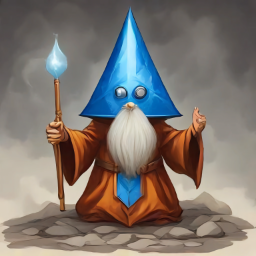This is a tool for breeding Noken from SDXL. It's a work in progress.
We can generate many images per second -- this is one idea for exploring the latent spaces between prompts.
Explore sending nokens instead of tokens to CLIP for embedding.
- users can generate images from a prompt (seeding the universe)
- users can generate images by selecting two existing images, which then mixes their embeddings (latent space of token embeddings sent to CLIP for guidance) to generate a new image
If you don't like the image, you can try again and get a different mix!
Let's desconstruct what happens when you send a prompt to SDXL (Turbo):
images = pipeline(prompt)
SDXL converts the prompt into prompt_embeds and pooled_prompt_embeds - and diffusers exposes
a method encode_prompt that does this:
prompt_embeds, _, pooled_prompt_embeds, _ = pipeline.encode_prompt(prompt)
Note: For this experiment we are ignoring negative prompts
While it is fun to play with this latent space (try replacing prompt_embeds with torch.randn_like(prompt_embeds)), what I want to do is deeper still.
Those prompt_embeds are 77-dimensional vectors generated by CLIP. SDXL utilizes two text_encoder/tokenizer - but the logic is very similar - tokenize the input, then call the text_encoder with those token ids:
input_ids = tokenizer.encode(
prompt,
return_tensors="pt",
padding="max_length",
max_length=tokenizer.model_max_length,
)
prompt_embeds = text_encoder(input_ids=input_ids, output_hidden_states=True)
pooled_prompt_embeds = prompt_embeds[0]
prompt_embeds = prompt_embeds.hidden_states[-2].to("cpu")
return prompt_embeds, pooled_prompt_embeds
While we can easily generate the token embeddings using CLIP, we cannot send these embeddings (or modifications of them) into the CLIP Text Encoder Model.
def get_tok_embed(prompt, tokenizer, text_encoder):
input_ids = tokenizer.encode(
prompt,
return_tensors="pt",
padding="max_length",
max_length=tokenizer.model_max_length,
).to(DEVICE)
return text_encoder.get_input_embeddings()(input_ids)
With a small patch to HF Transformers we can send any token embeddings (input_embeds) we wish:
def encode_tokens(inputs_embeds, text_encoder):
prompt_embeds = text_encoder(inputs_embeds=inputs_embeds, output_hidden_states=True)
pooled_prompt_embeds = prompt_embeds[0]
prompt_embeds = prompt_embeds.hidden_states[-2].to("cpu")
return prompt_embeds, pooled_prompt_embeds
Remembering that SDXL uses two different text_encoders, we can send nokens to both to generate the prompt_embeds and pooled_prompt_embeds that SDXL needs:
def gen_prompt_embeds(tok_embeds):
[lil_clip, big_clip] = tok_embeds
pe1, _ = encode_tokens(lil_clip, pipeline.text_encoder)
pe2, ppe2 = encode_tokens(big_clip, pipeline.text_encoder_2)
prompt_embeds = torch.concat([pe1, pe2], dim=-1)
pooled_prompt_embeds = ppe2 # SDXL only returns pooled prompt embeds text_encoder_2
return prompt_embeds, pooled_prompt_embeds
And finally putting it all together:
prompt_embeds, pooled_prompt_embeds = gen_prompt_embeds(token_embeds)
images = pipeline(
prompt_embeds=prompt_embeds,
pooled_prompt_embeds=pooled_prompt_embeds,
guidance_scale=0.0,
num_inference_steps=1,
num_images_per_prompt=num_images,
).images
This then allows us to modify the token embeddings we send in! SLERP? Genetic algorithms where users decide what survive to seed the next generate?
In backend/engine.py you can see a start to exploring this in the mix function.
- I've modified HF transformers to send token embeddings to CLIP instead of tokens - this opens up sending nokens!
- Using SDXL Turbo makes this fast (enough) on MPS to start exploring
- The engine currently works on the entire space of 77 tokens - playing with the current UI suggests working on individual Nokens could allowed controlled madness.
- instead of breeding the entire token embedding, breed noken(s) to use in prompts: "A drawing in the style of [noken] of a whippet sleeping"
- the svelte app was created as a quick test - I've not spent much time on it
I highly recommend installing in a virtualenv as this requires a patched version of transformers.
cd backend
python3 -m venv .venv
source .venv/bin/activate
pip install -r requirements.txt
Then to start the backend:
uvicorn main:app --reload --port 4444
For the draft svelte frontend:
cd frontend
npm install
npm run dev
Then visit http://localhost:5173 to see the frontend.
- click "new prompt" to generate an image from a prompt
- click "breed" to generate an image by mixing the token embeddings of two existing images
- drag and drop images to breed them
- shift click an image to delete it

